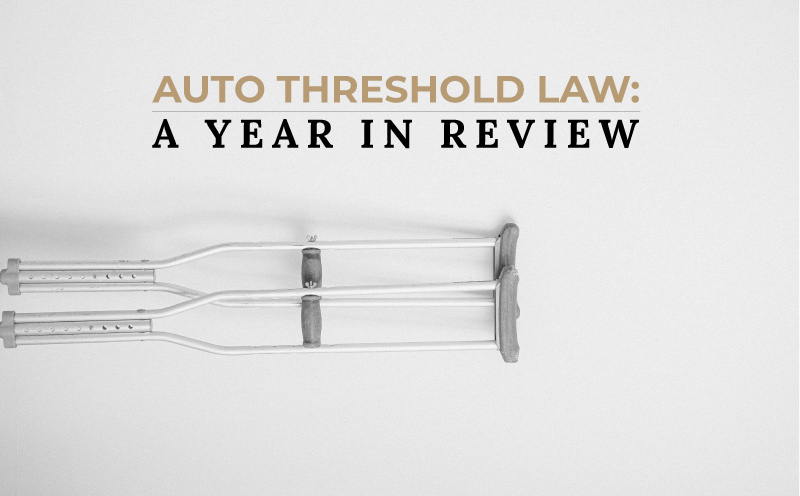Auto Threshold Law – A Year in Review

With all the outcry over the recent Draconian changes to auto no-fault medical benefits, it is easy to overlook the comings and goings of threshold law. Unlike on the first-party side, threshold law has remained stable. That is because the 2019 no-fault overhaul known as Public Acts 21/22 codified the Michigan Supreme Court’s 2010 decision in McCormick v. Carrier, 487 Mich 180 (2010).
That is not to say, however, that threshold law has been uneventful. Rather, the past year has been quite busy at our appellate courts. Between September 2020 and September 2021, the Michigan Court of Appeals issued 21 unpublished auto threshold decisions. This was more than most years, which typically see around 12-14 decisions.
But substantively, this past year was consistent with years prior. First, all of this past year’s cases involved the “serious impairment of body function” threshold. Second, the aggregate outcomes held steady, with the Court of Appeals holding more than 50% of the time that the serious impairment question could not be decided as a matter of law.
The cases from the past year also offer some thematic lessons for the bench and the bar. For the bench, the Court of Appeals consistently reminded trial judges to stay true to the language of the third prong of the serious impairment threshold. That prong requires proof that the impairment “affects the injured person’s general ability to lead his or her normal life.” MCL 500.3135(5)(c). As McCormick and the new statute confirm, this requires proof that the impairment influences the person’s “capacity” to live their normal life.
Where trial courts impose something stricter than the capacity test, the Court of Appeals is quick to reverse. For example, in Dumire v. Evener, unpublished opinion of the Court of Appeals, issued October 15, 2020 (Docket No. 350270), the trial court’s use of a “lasting effect” standard was reversible error. Similarly, in Brown v Debassige, unpublished opinion of the Court of Appeals, issued December 22, 2020 (Docket No. 350972), the trials court’s use of “a true general inability to lead” one’s normal life was also error.
For practitioners, last year’s cases offer a lesson on the first prong of the serious impairment threshold. This prong requires proof of an “objectively manifested” impairment, meaning an impairment that “is observable or perceivable from actual symptoms or conditions by someone other than the injured person.” MCL 500.3135(5)(a).
Here, the Court of Appeals reliably reminds practitioners that pain is not enough. It does not matter how many different ways the plaintiff tries to present evidence of pain. If pain is the only evidence of an objectively manifested impairment, then the plaintiff cannot survive summary disposition. Plaintiffs learned this lesson the hard way this last year in cases like Blair v. Jones, unpublished opinion of the Court of Appeals, issued February 18, 2021 (Docket No. 350769), and Harmon v Ewing, unpublished opinion of the Court of Appeals, issued June 10, 2021 (Docket No. 350857).
What’s in store for next year? Stay tuned.

Author – Grand Rapids car crash lawyer, Tom Sinas

